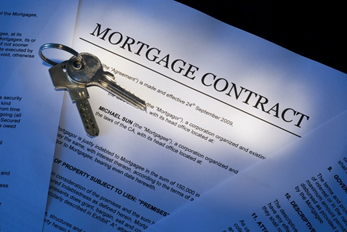What is a long term liability?
A long-term liability is an obligation arising from a transaction. Such an obligation is to be repaid after twelve months. Long term liabilities are also called non-current liabilities because the debts are due for repayment only in the following operating cycle of the business. Long term liabilities are a critical component of a company's long term financing decision. Long-term liabilities are usually taken up by the business for purchasing capital assets, financing new projects, or tapping growth and expansion opportunities. It is of utmost essence that companies repay their long term debts, and in time else, they would enter a solvency crisis. Their creditworthiness would become questionable in the market. It is included in the balance sheet's liabilities section as part of the total amount owed to creditors. Companies borrow money from banks to pay for long-term assets like land, buildings, and equipment and supplement their working capital to fund continuous, short-term needs (current liabilities). The balance sheet's notes to the financial statements contain information regarding bank debt and other long-term liabilities. Firms may amortise the long term liability, or they may exercise bullet repayment options.
Summary
- A long-term liability is an obligation to be repaid after twelve months.
- Long-term liabilities are usually taken up by the business for purchasing capital assets, financing new projects, or tapping growth and expansion opportunities.
- The long term liability may be amortised or bullet repayment options may be exercised.
Frequently Asked Questions
What are the various types of long term liabilities incurred by a business?
A business may have long term liabilities like bonds payable, long term loans, deferred tax liabilities, pension liabilities, capital leases, mortgage payable, long term notes payable etc.
What are bonds payable?
Bonds payable are long term liabilities. The firms record bonds payable on the liabilities side of the balance sheet under the head of long term liabilities. The bonds are due for repayment after over 365 days. The terms of payment of the bond are mentioned on the agreement- the bond's face value, the interest rate to be paid, special terms for repayment, and any conditions applicable to the issuer. Bonds payable are used for financing when borrowing costs are low in terms of low-interest rate.
Governments and organisations with more significant financing ability are the issuers of bond. Bonds may be issued at par, premium or at a discount. The difference between the coupon rate and the market yield at the time of issuance determines their pricing. The carrying value of the bond is the sum of bonds payable and unamortised premium/ discount. Thus, for bonds issued at a premium, the carrying value is more than the bond's face value while for bonds issued at a discount, the carrying value is lesser than the face value. For bonds issued at par, face value and carrying value will be equal.

© Rummess | Megapixl.com
What are long term notes payable?
A promissory note, the long term notes payable are agreements between a borrower and a lender. Here the borrower promises to pay back the amount with interest over a predetermined period. Long term notes payables are due for payment after one year from borrowing. Repayment liability on notes payable creates a charge on the firm's liquidity. Long term notes have a commonality – both the documents mention the rate of interest and date of maturity. The long term notes payables are issued for transactions between firms or between firms and financial institutions and not among the general public. Such notes payable may be for cash alone, or it may be a combination of cash and future benefits like discounts on purchases or may include payment in the form of assets.
What is meant by deferred tax liability?
A deferred tax liability occurs when the tax payment liability is accumulated in the current accounting period but is due only in the later accounting cycle. It is only later that the transaction will be completed. Such liability arises when the approaches followed by business differ from that of the government agencies responsible for tax collection. It should be noted that the recording of deferred tax liabilities is recorded only when the event's happening is certain; else it may only be recorded as a footnote.
Deferred tax liabilities may be created when the business's estimating depreciation differs from that of the tax departments- this creates a variance in the tax value estimations. Similarly, the way revenues and expenses are treated may be different for both cases. Carrying forward profits to the next year for tax saving is another reason for the creation of deferred tax liabilities. Tax footnotes provided by companies can give such information.
What are capital leases?
A lease agreement under which the lessor transfers ownership rights to the lessee on maturity is called a capital lease. The lease agreement provides the lessee with a negotiating option, wherein the lessee is allowed to purchase the asset at a lower price than the market value on maturity. In a capital lease, the lessee bears some of the ownership costs while still benefiting from some of the advantages. As a result, when the lease is signed, it is reported on the balance sheet as both an asset and a liability too for the lease payments.

© Volkantaner | Megapixl.com
What is meant by mortgage payable?
Mortgage payable is a long term liability created when long term assets are purchased by keeping the other capital assets as security. Mortgage payable may also mean purchases of capital assets against secured loans. The principal amount on loan due after twelve months is recorded as a long term liability on the liabilities side of the balance sheet. In the case of secured loans, the asset purchased itself is the mortgage usually.
 Please wait processing your request...
Please wait processing your request...